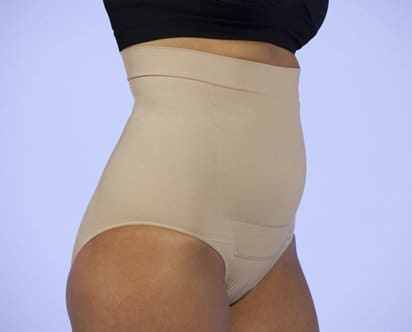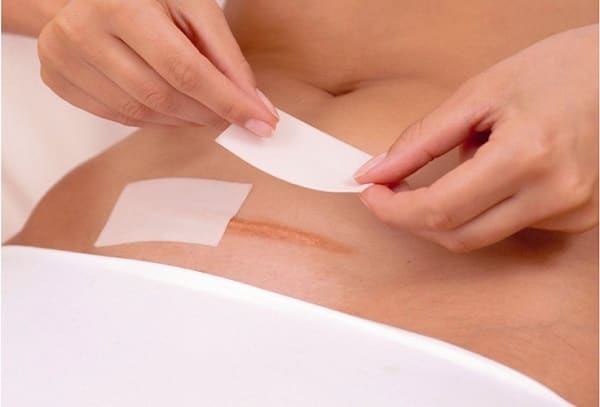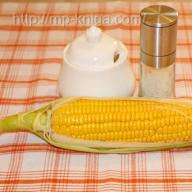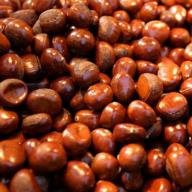- a type of surgical intervention that is quite common today, during which, as after any operation, a small seam remains on the body. And despite the fact that a pregnant woman knows in advance about the upcoming operation (at about 20-22 weeks, when all the tests were taken and the first ultrasound was done) and she, so to speak, has time to prepare (mostly mentally), there are a number of questions that continue to bother her
For example, how long does a cesarean section stitch heal, will it be noticeable, how to care for it, and what to do if the incision becomes inflamed or parted. An experienced doctor (obstetrician-gynecologist) should answer all these questions to the woman in labor immediately before (for better digestibility) and, of course, after the operation. In addition, do not be shy and contact the doctor at the site (the therapist or gynecologist) with questions of interest and problems that arise regarding the state of the suture after surgery, after returning home.
Types of seams
The condition of the suture after the operation depends, first of all, on how the caesarean section was performed: according to plan or urgently.
After all, if a woman knows in advance about the upcoming operation, she will be able to “tune in” to a quick recovery, because it’s not in vain that they say that thoughts are suggestible.
And it’s a completely different matter when a pregnant woman who went to a natural birth, for quite understandable reasons, mainly of a medical nature, decide to be caesarean - hence the fear and panic about the current situation.
After the operation, the suture remains on uterus (internal) and skin (external).
As for the direction - the incision can be made vertically- from the navel to the pubis (most often during emergency surgery, if bleeding begins or there is a threat to the life of the baby or mother) and horizontally- transverse seam (similar to an arc). It is located on the skin fold near the pubis (they also joke - like a “smiley face” on the stomach). And if in the first case the seam is far from being so beautiful even after a certain period of time has elapsed, then a horizontal incision (in medicine this operation is called Pfannenstiel laparotomy) is more aesthetic and over time (of course, subject to certain rules) it becomes almost invisible. In rare cases, a transverse suture is made, located 3 cm below the middle of the distance from the navel to the womb (laparotomy according to Joel-Cohen).
Care, peace and no burdens
So how does the healing process go?
In order for the condition of the woman after the operation, whether she or emergency, to stabilize, 5-7 days must pass (from the moment of the surgical intervention to discharge from the maternity hospital). During this time, the woman in labor will receive the necessary course of antibiotics and other medicines that help reduce pain, compatible with breastfeeding.
In the first 2-3 days, painkillers are required, then they can be given as desired, depending on how much pain is felt in the abdomen and uterus.
Gradually, addiction to this kind of pain occurs, and besides, you need to understand (and especially accept!) That when the mother and baby return home, most of the pills that can relieve pain are contraindicated for her. But do not be afraid - the pain will gradually go away, especially if you follow a number of rules prescribed by doctors.
The only thing that you really have to endure is the first discomfort after the operation. 10-11 hours after surgery, the woman in labor is asked to get up and, moreover, to begin to move actively. And this is very important, because the more you move, the faster the pain goes away and the seam heals. It is even allowed to sit, but just do not lie on your back all day.
Firstly, bedsores can form, secondly, the seam can fester, and thirdly, less movement means more pain.
If a woman is full, a postoperative bandage will help to cope with painful omissions.

Do not confuse it with postpartum, it is advisable to purchase a postoperative one, as it will help at least somehow immobilize the wound when moving. Feel free to ask a nurse or roommate to "pack" you into this wonderful corset, the main thing is that as a result you can walk and carry the baby in your arms.
While the woman is in the hospital, the nurses carefully look after her suture - they treat it with brilliant green, and in case of suppuration, they open it and clean it.
It happens that the seam begins to get wet - due to insufficient motor activity, lack of air access (especially if a pocket is formed from an overhanging abdomen), the temperature rises or other complications arise. All these inconveniences are completely eliminated, the main thing is to notify the doctor in time (if he himself does not notice the problem during the daily examination) about the discomfort.
After 7 days there is an extract. If the seam is cosmetic, the threads are not removed from it, only knots are removed along the edges, and over time, the remaining particles disappear on their own. If the seam is made vertically, the seams will be removed from it only after 7 days (in general, it takes about 14 days to heal). To do this, a woman should come to the emergency department of the maternity hospital in which she gave birth and see the doctor on duty.

After discharge, the suture must also be carefully looked after. In no case do not rub it with a washcloth when taking a shower, since it is not recommended to take a bath until complete recovery (and this is 2 months). It is advisable to simply lather your hand with household (it dries better) or baby (ph-neutral) soap, but flavored cosmetics should be avoided, as they can cause an allergic reaction, rinse the seam and rinse with water. Then dry thoroughly with a towel.
By the way, the occurrence of allergies at the site of the seam is not such a rare occurrence. This can happen for any reason - an overabundance of antibiotics in the blood, an "inappropriate" remedy for healing, and, finally, just a reaction to brilliant green.
(advertising2)
What to do if the seam after cesarean is inflamed
If the seam after a caesarean section is inflamed, reddened, or even partially dispersed (as if the skin was neatly divided into two parts), you can try to treat yourself or consult a doctor. Of course, the second option is preferable, but, having assessed the situation, it is possible to cope on our own. And then again brilliant green will come to the rescue - it will dry, hydrogen peroxide - “kills” the infection (until the place of the seam stops hissing) and healing ointments and powders.
Medicines are very good in such cases - Baneocin powder and Levomekol ointment, but both have side effects, so read the instructions carefully and pay attention to the condition of the seam and abdomen after their use. If it suddenly happens that the seam has opened after a cesarean, contact your doctor as soon as possible, as there is a risk of infection, and in rare cases, the inner seam may also open, and this is a repeated hospitalization and a possible mini-operation.
It happens that the seam after a caesarean section becomes hard– keloid, red in color and quite thick. This kind of scars occur only with a longitudinal incision. They can be smeared with ointments to reduce the effect, or you can seek help from plastic surgery professionals.
Little tricks for a quick recovery
To avoid discrepancy and contribute to the rapid healing of the suture after a cesarean section, following several rules will help:
And one more little trick - every time you have to get out of bed, use one hand as a kind of weighting device, for example, if you are trying to get up through your right side - put your right hand on your stomach and lightly press it in the navel area, as if holding on one place, and with your left (over your right hand) grab the side of the bed or something else and pull yourself up. And vice versa - right to left, if through the left side. At first, this will help you quickly cope with the difficulties that arise when getting out of bed.
Doctors also advise getting up on tiptoe after surgery and walking around for a few minutes a day. As for the exercises, their action is aimed at relieving pain in the spine (especially the calf), legs and abdomen.
It is very important to lie on your stomach as often as possible. In this position, the healing process is accelerated, the uterus begins to contract more often, which leads to an improvement in the general well-being of the woman.
Very efficient heating
It can also be like warming up. For example, in some maternity hospitals today there are magnetic devices, the action of which is aimed at the rapid healing of wounds received during the operation.
Sometimes it happens that there are painful and pulling sensations along the edges of the seam - you should not be scared, unless of course there are a number of other conditions. Perhaps, during the operation, they took a little extra skin - everything goes away with time. The same applies to slight twitches, as if the nerve in the tooth is pulling. If you move a lot, all pain will disappear. And of course - breastfeeding, it best helps to cope with any manifestations of pain.
How to remove a stitch after a caesarean section
Many women are also interested in the question: how to remove the seam after a cesarean section. The solution to the problem is possible, but only after complete healing and ultrasound. By the way, after a cesarean, the diagnosis of the state of the seam is done 2 months after the operation, then every six months. According to the data obtained during the study, it will be possible to see what condition the internal suture is in, whether there are adhesions or fistulas, how the external suture has healed.
The best option for seam correction is laser resurfacing, which removes damaged tissue from the incision. However, this process is very painful and requires a course of medications that exclude the occurrence of any kind of infection at the site of the scar.
The most expensive procedure is suture excision, when coarse collagen particles and vessels that have grown at the incision site are removed under local anesthesia along with excess skin and a new abdominal contour is formed.
It is also possible to carry out a chemical peel, grinding the seam with aluminum oxide (microdermabrasion), get a tattoo or simply apply a special tool that helps to make the postoperative seam invisible. The components that make up this kind of ointment help prevent the appearance of scar tissue, as well as increase collagen production and help reduce the size of the scar.




